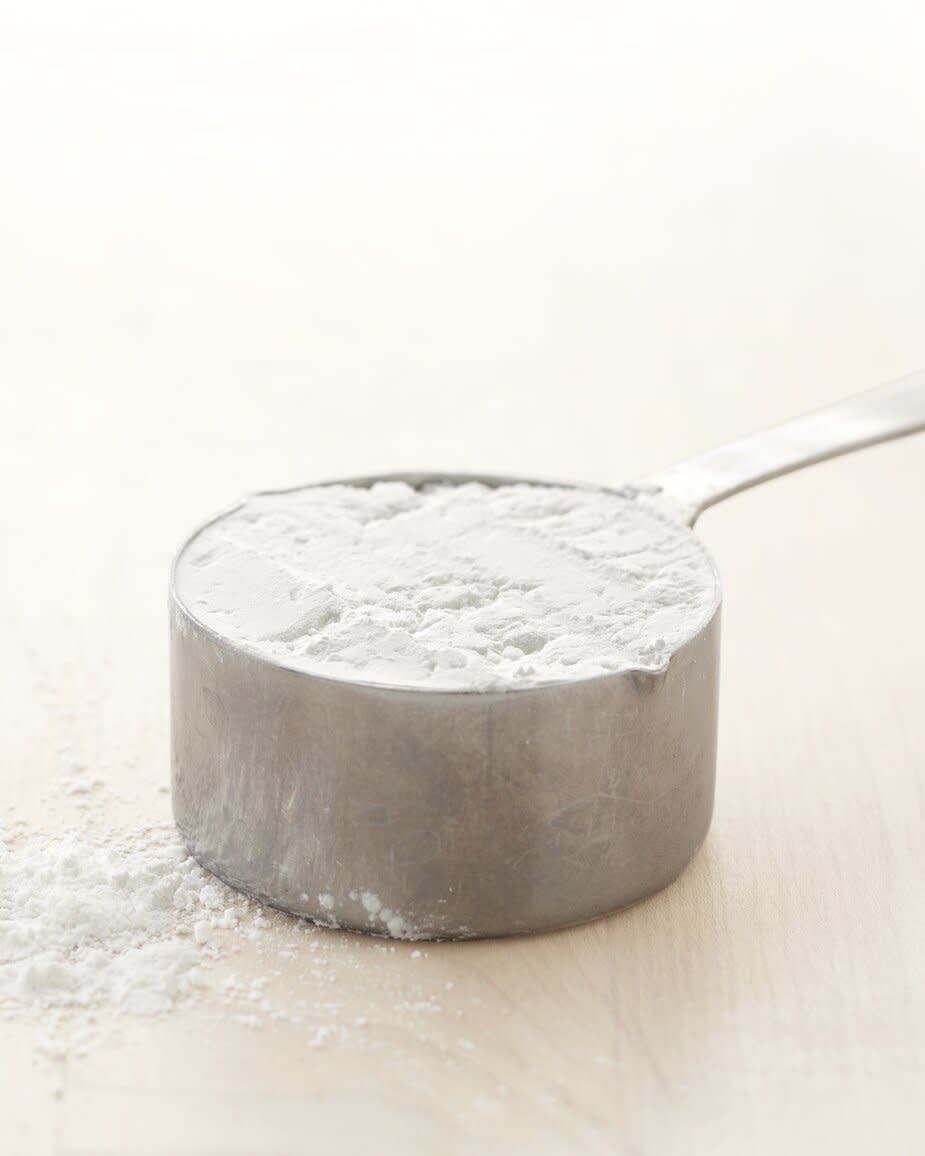Why You Should Always Keep Cornstarch in Your Kitchen

Chances are you have a box or canister of cornstarch sitting in your pantry right now. It's just the sort of ingredient that makes it way into recipes of all kinds. But what is cornstarch and what does it do? Even the most seasoned home cooks may not know the answer to those questions, despite the number of times they've relied on this essential. Rather than asking what cornstarch can do, though, it may be more apt to wonder what it can't do—after all, its uses are numerous and wondrous.

Cornstarch is a starch derived from the endosperm of the corn kernel, which gives the plant its energy. Many starches are made from grains—rice, for example, tapioca, arrowroot, potatoes, and wheat—but cornstarch is the most commonly used among them. When it was invented in mid-19th century New Jersey by Thomas Kingsford, cornstarch was used chiefly as a laundry aid and in other commercial applications. Eventually, it made its way into the kitchen, where it has since been used primarily as a thickening agent ever since. (A quick note on terminology: In the U.K., what's known in the United States as cornstarch is called corn flour. In the U.S., however, corn flour is made from the whole grain of corn—the endosperm as well as the bran and the germ.)
Cornstarch helps thicken the liquid ingredients in sauces, stews, stir-fries, custards, puddings, and pastry creams. It's also commonly used in fruit pies to help hot juices set and make the baked pie easier to slice once it has cooled. As a thickener, cornstarch is twice as powerful as flour. (With that ratio in mind, it's an easy swap: If a recipe calls for two tablespoons flour, you need one tablespoon of cornstarch.) Its thickening properties are comparable to arrowroot and tapioca; either can be used interchangeably with cornstarch, without any adjustment to the amount.
Related: Why Do We Grease Cookie Sheets?
In order for its thickening properties to be activated, cornstarch has to be heated to the temperature of simmering liquid. In the case of a fruit pie, that means once you see the thickened fruit juices bubbling up from the steam vents in the top crust. When used to thicken a soup or stir-fry, it's best to make a slurry first, which will prevent the starch from clumping when it hits the hot liquid. Simply combine the starch with cold or room temperature water (or another liquid, like broth or milk) and whisk until smooth before adding to the hot liquid.
Beyond puddings and pies, cornstarch is worth keeping close at hand for other desserts, including Gluten-Free Fudgy Pecan Brownies and the delightfully tender Australian cookies aptly known as melting moments.
If you like to fry chicken, you'll want to combine cornstarch with flour and seasonings to make the world's very best coating for it. The cooks in our test kitchen collectively swear that cornstarch also holds the secret to their all-time favorite chicken wings, the crispiest, crunchiest onion rings, and the most impossibly irresistible roast potatoes.
And just as it was used nearly two hundred years ago, cornstarch can still help you keep laundry looking its best. Use it get oily stains out of clothing (after frying all that chicken, maybe!) or to starch your shirts when they are pressed. Despite any date you might see on the package, cornstarch shouldn't go bad or lose its power. As long as you keep it in cool, dry place, free from moisture, it should last indefinitely on your shelf—that is, if you don't go through it quickly. After all, there's almost nothing it can't do.

